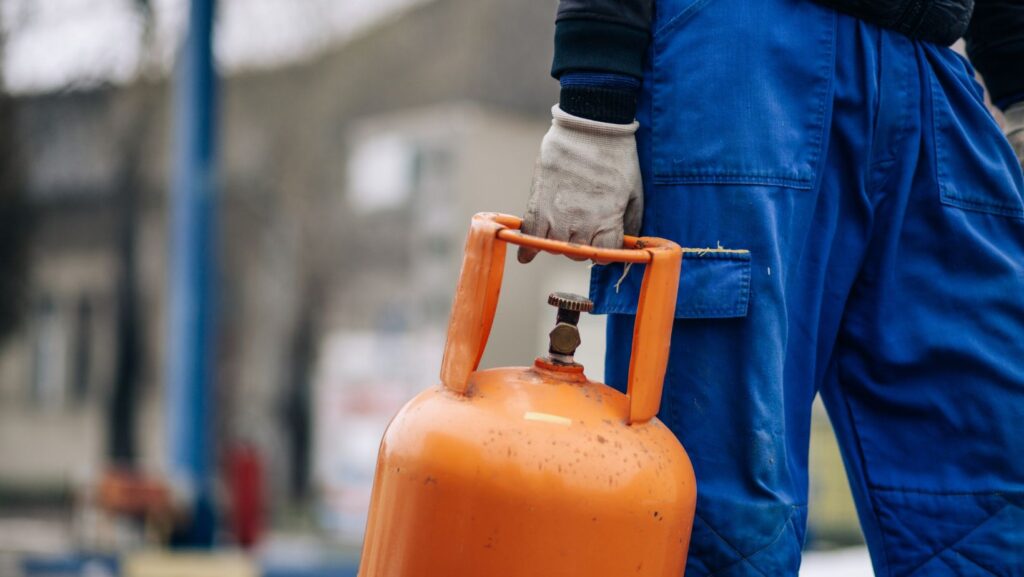
When you think of your kitchen setup, chances are you’re focused on the tools, gadgets, and ingredients that make your meals come to life. But behind many cooking processes, there’s a hidden force at work — gas cylinders. These versatile, often overlooked cylinders are the backbone of various culinary techniques. While their uses extend beyond the kitchen into numerous industries, understanding the different types of gas cylinders and their unique roles can help elevate your cooking, whether you’re a home chef or a professional in the culinary world.
Understanding Gas Cylinders: Beyond the Basics
Gas cylinders come in various forms and sizes, each designed to store specific gases that serve distinct purposes. In the kitchen, the right gas can make all the difference, from whipping up a perfect foam for a dessert to ensuring that your cooking equipment runs smoothly. Broadly speaking, gas cylinders can be classified into four main types: N₂O (Nitrous Oxide), CO₂ (Carbon Dioxide), propane, and butane.
1. N₂O (Nitrous Oxide): The Chef’s Secret Weapon
Nitrous oxide, commonly known as N₂O, is one of the most crucial gases in modern kitchens. While it’s most often associated with whipped cream chargers, its versatility extends far beyond dessert-making. N₂O is used in culinary applications to create foams, emulsions, and frothy textures, adding a new dimension to your cooking.
N₂O has become particularly popular in the preparation of delicate culinary creations, such as savory mousses, whipped creams, and foamy cocktails. The gas works by rapidly dissolving into liquids, and when released, it creates a light and airy texture, perfect for gourmet presentations. For anyone who has ever struggled with getting that perfect whipped cream texture at home, investing in quality N₂O products like those from FastGas can drastically improve the quality of your culinary results.
2. CO₂ (Carbon Dioxide): A Key Ingredient in Carbonation
Carbon dioxide is another essential gas in the culinary world, widely recognized for its role in carbonating drinks like sodas and sparkling water. But CO₂’s utility extends far beyond beverages; it also serves to enhance certain cooking processes and even helps in preserving food.
In the kitchen, CO₂ is used in various applications such as creating carbonated cocktails or adding bubbles to liquid-based foods like soups and sauces. Its primary role is carbonation, where it adds effervescence and liveliness to liquids. It’s also common in food preservation, as it helps to extend the shelf life of perishable items by reducing oxygen exposure in packaging.
3. Propane and Butane: Fueling Your Stove and Grills
While N₂O and CO₂ take center stage in culinary artistry, gases like propane and butane are often more utilitarian in nature. These gases are primarily used as fuel sources for stoves, grills, and other heating elements in both home kitchens and commercial establishments.
Propane and butane are liquefied petroleum gases (LPGs) and are highly efficient in providing consistent heat for cooking. Whether you’re grilling outside or cooking up a storm in your kitchen, these gases ensure that your burners and ovens operate smoothly and efficiently. They’re often found in portable cooking equipment and are key players in the hospitality industry, where quick, reliable heat is essential for cooking and serving meals at scale.
4. Choosing the Right Gas: What Works for Your Kitchen?
The right gas cylinder depends on the type of cooking you’re doing. Home chefs who enjoy experimenting with foam-based desserts will likely prefer N₂O, while those interested in outdoor grilling or stove cooking will lean toward propane or butane. Additionally, carbon dioxide is ideal for carbonating drinks and creating fizzy culinary concoctions.
When selecting a gas, it’s important to consider not only the cooking technique but also the quality of the gas itself. Not all cylinders are created equal, and the quality of the gas impacts both the performance and the safety of your kitchen equipment. This is where reliable sources like FastGas come in, offering high-quality N₂O products that ensure top-tier results.
The Environmental Impact of Gas Cylinders
While gas cylinders offer significant advantages in the kitchen, they do come with environmental concerns. Many gases, such as CO₂ and N₂O, are potent greenhouse gases that can contribute to global warming when not managed properly. However, advancements in gas cylinder technology have allowed for more eco-friendly solutions, such as recycling programs and the development of reusable cylinders.

Some brands, including FastGas, are committed to reducing their environmental impact by providing high-quality, longer-lasting cylinders. By investing in high-grade products, consumers can ensure that they’re not only getting the best performance but are also making a more sustainable choice for the planet.
The Future of Gas Cylinders in Cooking
As culinary technology continues to evolve, the role of gas cylinders will only grow more prominent. Innovations in gas-based cooking methods will continue to expand, especially with new applications in molecular gastronomy, where gases like N₂O and CO₂ play a critical role in creating unique textures and flavors.
Additionally, sustainability efforts will likely drive further innovation, as manufacturers work to minimize waste and reduce the carbon footprint associated with gas cylinder production. With advancements in both technology and environmental stewardship, gas cylinders will continue to be indispensable in kitchens around the world.
Wrapping It Up
Gas cylinders are far more than simple tools; they’re integral to modern cooking, enabling chefs to explore new textures, flavors, and techniques. Whether it’s the versatility of N₂O for creating foams or the reliability of propane for grilling, each type of gas cylinder plays a crucial role in the kitchen. When looking for high-quality options, brands like FastGas ensure you get the best performance, helping elevate your culinary creations while also being conscious of the environment.













